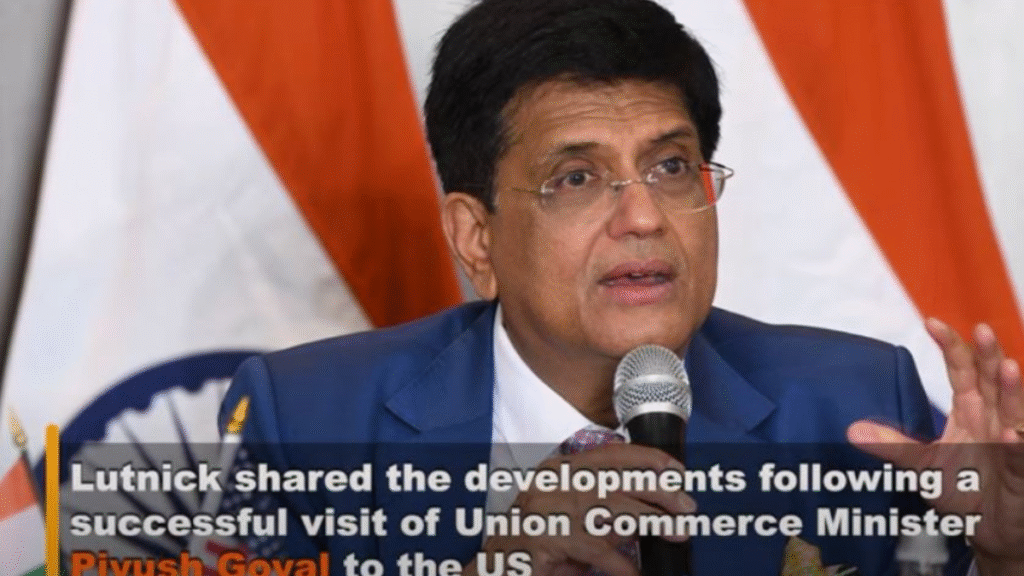In recent statements, U.S. officials have expressed concerns over India’s continued procurement of Russian Arms (military equipment) and its active participation in the BRICS alliance. These issues have been highlighted as potential obstacles to strengthening U.S.-India relations.The United States has voiced strong disapproval of India’s continued arms purchases from Russia, with U.S. Commerce Secretary Howard Lutnick bluntly stating that such decisions have “rubbed America the wrong way.” For decades, India has been one of Russia’s top defense clients an enduring partnership that has often posed challenges to deeper U.S.-India ties. A prime example is the acquisition of the Russian made S-400 missile defense system, which has notably bolstered India’s strategic edge, particularly in the aftermath of heightened tensions with Pakistan following the Kashmir attack.
Concerns Over Russian Arms Purchases
U.S. Commerce Secretary Howard Lutnick has pointed out that India’s historical reliance on Russian arms has been a point of contention. While acknowledging that this has previously strained bilateral ties, Lutnick noted a positive shift as India gradually diversifies its defense acquisitions, increasingly incorporating U.S.-made military equipment. This transition is seen as a step towards enhancing strategic and economic cooperation between the two nations.
BRICS Participation and Economic Implications
India’s involvement in the BRICS alliance, particularly in discussions about developing an alternative global currency, has also drawn criticism from U.S. officials. Lutnick emphasized that such initiatives could undermine the U.S. dollar’s dominance and potentially affect the economic dynamics between the U.S. and India. He urged India to reconsider its role in these efforts to foster a more favorable environment for bilateral trade and investment.
Shifting Gears on Defense Deals

U.S. Commerce Secretary Howard Lutnick acknowledged that India’s long-standing inclination toward Russian arms (military equipment) had been a persistent thorn in U.S.-India relations.
“There were certain actions by the Indian government that didn’t sit well with the United States,” Lutnick remarked. “One clear example is India’s tendency to source its defense gear from Russia. That’s the kind of move that tends to get under America’s skin. But now, we’re seeing a shift India is gradually pivoting towards U.S.-made military hardware, and that change speaks volumes. It’s a step in the right direction for both our nations.”However, Lutnick emphasized that the landscape is beginning to shift: “I believe India is now moving toward purchasing more military equipment from the United States, and that makes a significant difference. These kinds of steps help build stronger ties. On the flip side, being an active part of BRICS with its agenda of moving away from the U.S. dollar and challenging dollar dominance that’s not exactly how you make allies or win influence in America,” he remarked pointedly.U.S. Commerce Secretary Howard Lutnick stated today that India’s historical reliance on Russian arms (military equipment) has previously strained its ties with Washington. Speaking candidly, he acknowledged that such decisions had created friction between the two nations. However, Lutnick expressed optimism, suggesting that a trade agreement between the U.S. and India could be on the horizon in the “not-too-distant future.”
“There were certain actions by the Indian government that didn’t sit well with the United States,” Lutnick remarked during the eighth U.S.-India Strategic Partnership Forum in Washington, D.C., as quoted by news agency ANI. “For example, India’s consistent choice to procure arms from Russia has often irked America—it’s something that tends to get under our skin
India’s Strategic Autonomy
India maintains that its defense and foreign policy decisions are guided by strategic autonomy. The country’s longstanding defense ties with Russia are rooted in historical context and practical considerations. However, India is also expanding its defense partnerships, including with the U.S., to diversify its military capabilities and reduce over-reliance on any single source.
Looking Ahead
As global geopolitical dynamics evolve, India faces the challenge of balancing its traditional alliances with emerging partnerships. The U.S. has expressed a desire to deepen ties with India, contingent on policy alignments that reflect shared strategic interests. India’s approach will likely continue to emphasize a multipolar engagement strategy, aiming to uphold its national interests while contributing to regional and global stability.
